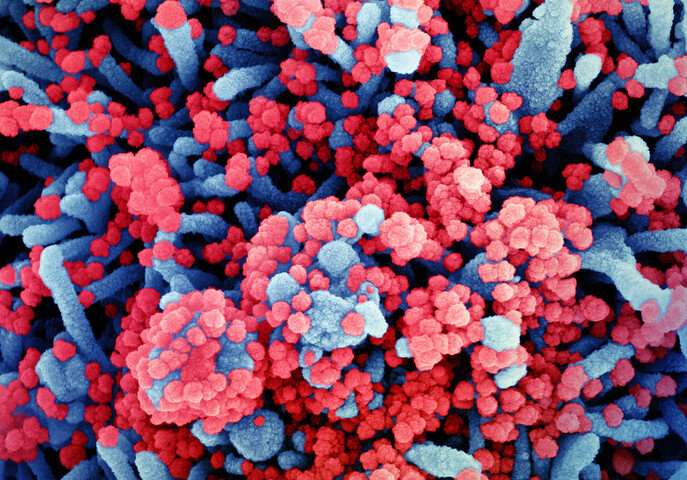Most COVID-19 (coronavirus) patients in Southern California during the early months of the pandemic appear to have been infected by a variant of the SARS-CoV-2 virus introduced to the region from New York state via Europe, not directly from China, where the virus was first detected, according to a new study conducted at Cedars-Sinai.
The findings were based on a genetic analysis of the virus found in tissue samples taken from 192 patients diagnosed with COVID-19 at Cedars-Sinai.
Investigators said they believed their study was the first published genetic characterization of SARS-CoV-2 in the Los Angeles population using an advanced technique known as next-generation sequencing, which analyzes all the genes, or genome, of a virus or other organism. The study was published Oct. 7 in the journal JAMA Network Open.
“Based on these findings, we concluded SARS-CoV-2 was likely introduced into the Los Angeles community predominantly from New York state but also through multiple other independent transmission routes that included Washington state and China,” said Eric Vail, MD, assistant professor and director of Molecular Pathology in the Department of Pathology and Laboratory Medicine at Cedars-Sinai. He was co-senior author of the study.
Specifically, investigators found that about 15% of the virus samples taken from the COVID-19 patients at Cedars-Sinai between March 22 and April 15 were genetically similar to published profiles of SARS-CoV-2 viruses from Asia, while 82% shared close similarities with variants originating in Europe.
“It was surprising to us that New York appeared to be the source of so much of the Los Angeles virus, especially since the first confirmed COVID-19 case in the U.S. involved a person who had returned to Washington state after visiting China,” said Jasmine Plummer, Ph.D., research scientist at the Cedars-Sinai Center for Bioinformatics and Functional Genomics and associate director of the Applied Genomics, Computation & Translational Core. She was the other co-senior author of the study.
In addition, analysis of the SARS-CoV-2 virus using next-generation sequencing proved to be so precise that investigators were able to identify a unique cluster of 13 coronavirus patients, all members of the same religious denomination, living within a 2.4-mile radius of each other. This finding pointed to the potential for using this technique to monitor local community spread of the disease.
“This innovative research provides data to advance comparative genetic analysis of identifying features unique to SARS-CoV-2,” said David Frishberg, MD, chair of Academic Pathology and professor of Pathology and Laboratory Medicine at Cedars-Sinai. “Sequencing discoveries provide critical information about COVID-19 and its origins and evolution, and they may even help predict its future trajectory.”
Low rate of COVID-19 found in women admitted for childbirth at Cedars-Sinai
More information:
Wenjuan Zhang et al, Analysis of Genomic Characteristics and Transmission Routes of Patients With Confirmed SARS-CoV-2 in Southern California During the Early Stage of the US COVID-19 Pandemic, JAMA Network Open (2020). DOI: 10.1001/jamanetworkopen.2020.24191
Provided by
Cedars-Sinai Medical Center
Citation:
Early COVID-19 cases in Southern California linked to New York (2020, October 8)
retrieved 9 October 2020
from https://medicalxpress.com/news/2020-10-early-covid-cases-southern-california.html
This document is subject to copyright. Apart from any fair dealing for the purpose of private study or research, no
part may be reproduced without the written permission. The content is provided for information purposes only.



